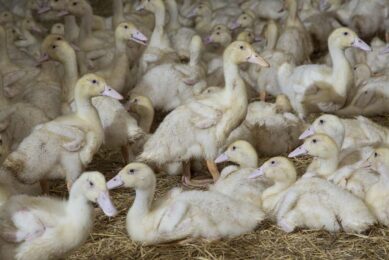Japanese broiler meat sector makes slow recovery
Japanese domestic broiler meat production fell an estimated 8% in the first half of 2011, compared to the same period in 2010, however, production is expected to recover in 2012 and increase by 3%, reaching 1.27 million metric tons.
After the March earthquake in 2011 Japanese consumers temporarily refrained from eating out; consumers avoided perishable food items, including fresh meat and chicken, and instead chose ready-to-eat meals and convenience foods to take back home and eat.
Avian Influenza
Massive outbreaks of highly pathogenic avian influenza in early 2011 severely affected the nation’s second largest broiler producing state of Miyazaki, causing a large number of birds to be culled, and reducing broiler meat shipments from the prefecture.
The broiler industry in Tohoku and Kanto regions was also temporarily incapacitated by the March earthquake and Tsunami, contributing to reduced shipments. This was especially true for the Iwate prefecture in the Tohoku region, the nation’s third largest broiler producing state. Some of the production and processing facilities in Iwate, including parental stock operations and hatcheries owned by relatively large scale integrators, were reportedly demolished and washed away by the Tsunami. Miyazaki and Iwate combined for roughly 32% of the total broilers raised in Japan. By summer most infrastructures, including hatcheries and feed manufacturing, had reportedly been restored.
Domestic broiler meat
Increased availability of fresh domestic broiler meat in 2012 (priced lower than the previous year) and higher stocks will likely reduce total imports in 2012. This should encourage Japanese households to look for domestic fresh branded chicken, especially in retail, at the expense of imports. On an annual basis, Japan’s 2011 total broiler imports are projected to reach a 10-year record high of 840,000 MT (broiler meat up 7% to 450,000 MT and prepared products up 6% to 395,000 MT).
In 2012 Japan will continue to remain the major market for Chinese and Thailand prepared (cooked) broiler products in high performing sectors such as fast foods, convenience foods, and ready-to-eat meals. In the retail sector demand for cooked products may slow in 2012 as consumers resume purchases of fresh domestic chicken which was in short supply and highly-priced in 2011.
Source: USDA: International Egg and Poultry Review
Join 31,000+ subscribers
Subscribe to our newsletter to stay updated about all the need-to-know content in the poultry sector, three times a week. Beheer
Beheer








 WP Admin
WP Admin  Bewerk bericht
Bewerk bericht